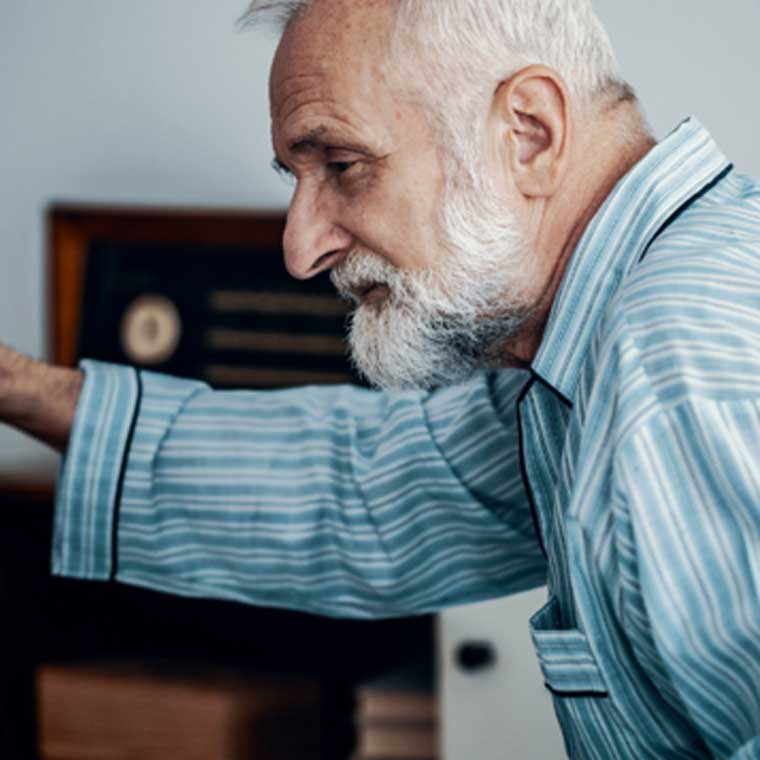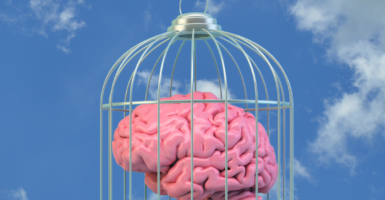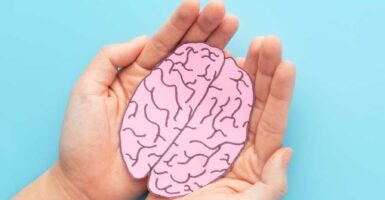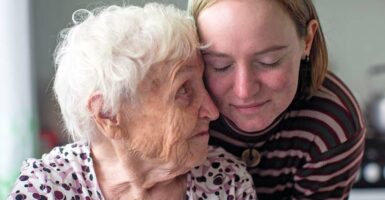How Does Osteoporosis Occur?
Our bones may seem as impermeable as a rock, but they are actually living tissue. Your body is constantly breaking down old bone tissue and replacing it with new tissue. Under a microscope, this healthy bone tissue looks like a honeycomb. Gradually, your body will break down more bone tissue than it replaces. This weakens bones, making them easier to break.
For women, the hormone oestrogen helps protect bone strength. The reduction in oestrogen in the years following menopause causes a rapid bone loss, which can lead to osteoporosis.
About 1 in 2 women and 1 in 5 men over 50 will break a bone (fracture) because of osteoporosis so it is important to keep your bones healthy.
What’s My Risk?
These factors put you at risk for osteoporosis:
- Gender. Women are at higher risk than men.
- Aging. The older you are, the greater your risk.
- Menopause. Menopause brings about changes in hormones, such as a reduction in oestrogen.
- Your body frame. Women who are thin and small-boned (generally under 127 pounds, BMI under 19) are at higher risk.
- Certain medical disorders such as Rheumatoid arthritis, type 1 diabetes, premature menopause and hyperthyroidism.
- Medications. Some commonly used medicines can cause loss of bone mass, such as steroids and treatments for Crohn’s disease.
- Family history. If you have a family member who has (or had) osteoporosis, your risk of having it goes up.
- Unhealthy lifestyle – low physical activity, smoking, excessive alcohol, lack of calcium and vitamin D.
What are the symptoms?
Unfortunately osteoporosis has no symptoms and you can’t feel your bones getting weaker. This means that osteoporosis usually goes undetected until you break a bone.
There are some signs that you can look out for which can mean the bones in your back have weakened. If you notice any of the following then it is best to speak to your doctor:
- severe back pain
- your spine has become curved
- you have lost height.
How Do I Reduce My Risk?
Physical activity
Physical activity strengthens your bones as well as the muscles supporting them. It also improves your balance, which helps prevent falls. Experts recommend weight-bearing activities, like walking, dancing, jogging and climbing stairs.
Exercise also builds muscle tone and improves balance, thereby preventing falls. There are simple, gentle exercises you can do in the comfort of your own home. Browse more exercises to improve bone health.
Include Calcium in your diet
Calcium is the main building block for bones and gives bones their strength and structure. Our body’s ability to absorb calcium reduces as we get older, so it’s important to make sure you’re getting enough calcium in later life. Calcium-rich foods include milk and milk products; salmon and sardines with bones; beans; sunflower and sesame seeds; broccoli and other greens; figs; and rhubarb.
Get enough Vitamin D
Calcium is not easily absorbed by the body without vitamin D. Vitamin D helps your body absorb and use calcium, which gives your bones their strength and hardness.
There are three ways you can get vitamin D
- From sunlight. In the UK your skin can only get vitamin D from sunlight between March and September. During this time, it’s recommended you expose your skin to direct sunlight for around 10 minutes, once or twice per day.
- From food. A small amount of vitamin D is found naturally in some foods (e.g. oily fish, eggs, fortified breakfast cereals).
- From supplements. Most people don’t get enough vitamin D from sunlight in winter and it’s difficult to get enough vitamin D from food alone. Consider taking a daily 10 microgram (sometimes called 400 units) vitamin D supplement. Do not take a higher dose than recommended, unless your healthcare professional tells you to. Too much vitamin D can be dangerous.
Avoid smoking and reduce alcohol
Smokers have faster rates of bone loss and a higher risk of fractures than non-smokers. Women who smoke also tend to enter menopause at an earlier age than non-smokers. Regularly drinking too much alcohol can lead to bone loss and increases the risk of a broken bone.
Prevent falls
If you have been diagnosed with osteoporosis or have some of the risk factors, preventing falls is particularly important. An exercise program geared to your abilities will help. Wear comfortable shoes that give good support. Watch for uneven ground, sidewalks and floors. See our article on the risks of falls and prevention.
Maintain a healthy body weight
Keeping a healthy body weight can help to keep your bones healthy. Low body weight means you have smaller bones which tend to be more fragile. It also means there’s little body fat and muscle to protect you if you fall.




